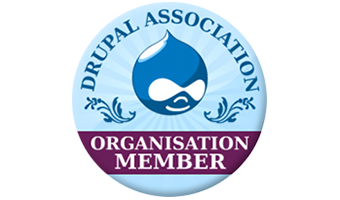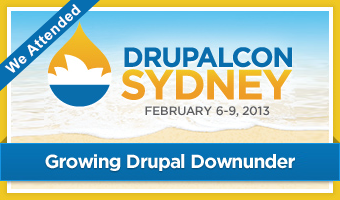by Aswathi P P (Software Programmer, Excellone Technologies)
WAP the new Avenue Wireless Application Protocol (WAP), the standard moulded and nurtured by the WAP forum (Nokia, Ericsson, and Phone.com & Motorola) supplies a uniform technology platform with consistent content format for delivering Internet and Intranet based information and services to digital mobile phones and other wireless devices. WAP development facilitates easy and fast rendering of needed information and services to mobile users.
According to the WAP development forums official definition, WAP is, The de-facto worldwide standard for providing Internet communication and advanced telephony services on digital mobile phones, pagers, personal digital assistants and other wireless terminals
Basically WAP is designed to make customer-friendly and fresh data applications for mobile phones. Three types of terminals, in use have been defined
- Featured phone, which offers high voice quality with the capability of text messaging and Internet browsing.
- Smart phones with similar function along with large display.
- The Communicator, an advanced terminal for mobile professional similar in size to a palm top with a larger display.
The WAP forum had set the following goals for WAP
- Independent wireless network standard.
- Open to all Internet users
- Proposed to the appropriate web standard bodies.
- Scalable across transport options.
- Scalable across device types.
- Extensible overtime to new networks and transports.
The WAP development forum has also made WAP accessible to GSM – 900, GSM 1800, GSM 1900, CDMA IS 95, TDMA IS 136, 3G systems IMT 2000, UTMS, W-CDMA Wideband IS 95.
WAP services in actual scenario
In the actual business scenario, services of WAP development can be adopted for transferring information. WAP development can provide its services by using inexpensive devices with built in barcode scanners, keypads and simple digital display. WAP allows a suite of client application to be built which reuses existing server applications and database. Further more, these applications can be dynamically downloaded and run on any of these devices. Wireless application in every industry will certainly need WAP services.
Coming to the grass root level, this is how a WAP service works.
- The client makes a request.
- The WAP gateway receives the clients request (which is received by a WAP gateway).
- The request is processed and formulated using WML and the result is back to the client.
Communication between the client and the server through these layers, Wireless Application Environment (WAE), Wireless Session Protocol (WSP), Wireless Transaction Protocol (WTP), Wireless Transport Layer Security (WTLS), Wireless Data gram Protocol (WDP), Beares (GSM, IS – 136, CDMA, GPRS, CDPD etc.).
Communications Between Client and Server
The WAP development Protocol Stack is implemented via a layered approach, which is similar to the OSI network model. The different layers are,
- Wireless Application Environment (WAE)
- Wireless Session Protocol (WSP)
- Wireless Transaction Protocol (WTP)
- Wireless Transport Layer Security (WTLS)
- Wireless Datagram Protocol (WDP)
- Bearers (GSM, IS-136, CDMA, GPRS, CDPD, etc.)
According to the specifications for WAP development, WSP offer means to provide functionality, extensible request – reply methods, composite objects, content type negotiation, exchange client and web server session headers, interrupt transactions in process and push content from web server to client in an unsynchronized manner, negotiate support for multiple, simultaneous and asynchronous transactions.
Further more it specifies, that WAP the protocol that allows for interactive web browsing applications supports three transaction classes.
- Unreliable with no result message,
- Reliable with no result message and
- Reliable with one reliable result.
WTP also defines the transaction environment in which clients and servers interact and exchange data.
WTLS that provide security is based on SSL and TLS.
WDP layers, allow applications to operate transparently over varying bearer services.
The Wireless Mark up Language (WML) is, in fact, an XML document type defined by a standard XML Document Type Definition, or DTD.
WMLScript facilitates client side procedural logic which is based on ECMA script based on Java script language.
WMLScript is a case-sensitive language that supports the standard variable declarations, function and other common constructs such as if-then statements and for / while loops. Among the standards more interesting features are the ability to use external compilation (units via the use url pragma), access control (via the access pragma) and a set of standard libraries defined by the specification including the Lang, Float, String, URL, WML Browser, and Dialogs libraries.
WAP Forum
The team behind WAP development is the WAP forum founded by Nokia, Ericsson, Phone.com & Motorola. Now the software giants like Microsoft, Oracle, IBM & Intel have joined hands with the forum along with hundreds of others.
These huge supports are one of the greatest strengths of WAP development. WAP’s approach to content distribution and the way of distributing contents to remote devices using inexpensive, standardized client software is also adding to its popularity. WAP technologies, which rely on back-end service to handle user authentication, database queries, intensive processing and the usage of mark up languages derived from SGML for delivering content to client, may all have positively affected it.
WAP development being an extremely novel technology, is gaining increasing popularity. WAP has the image of a powerful tool for software developers.








Warning: Undefined array key "comment_error_msg" in /home/dh_u5m5hd/itoutsourcingindia.com/blog/wp-content/themes/itoi/comments.php on line 75